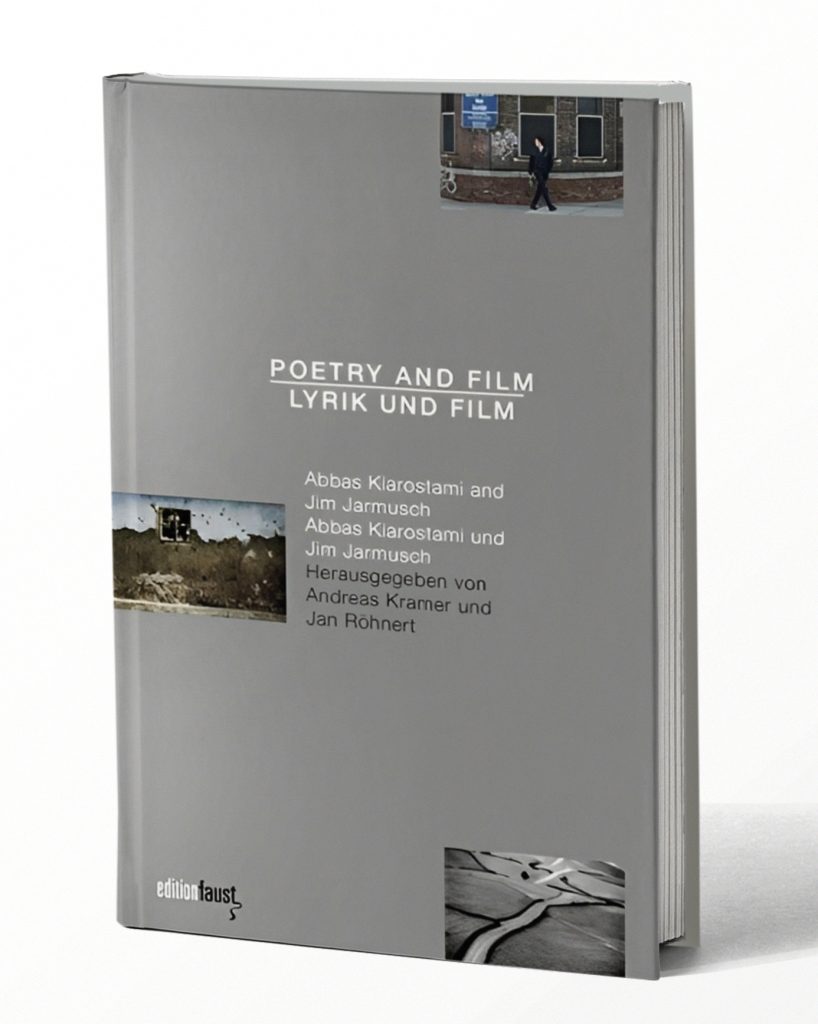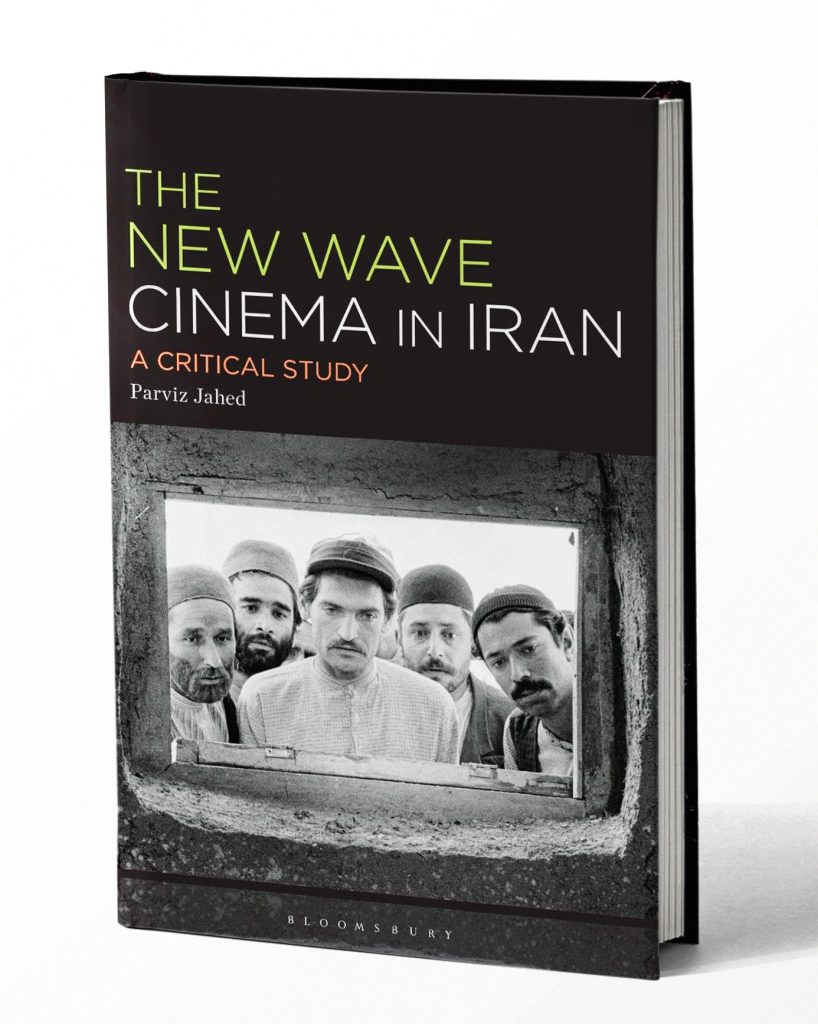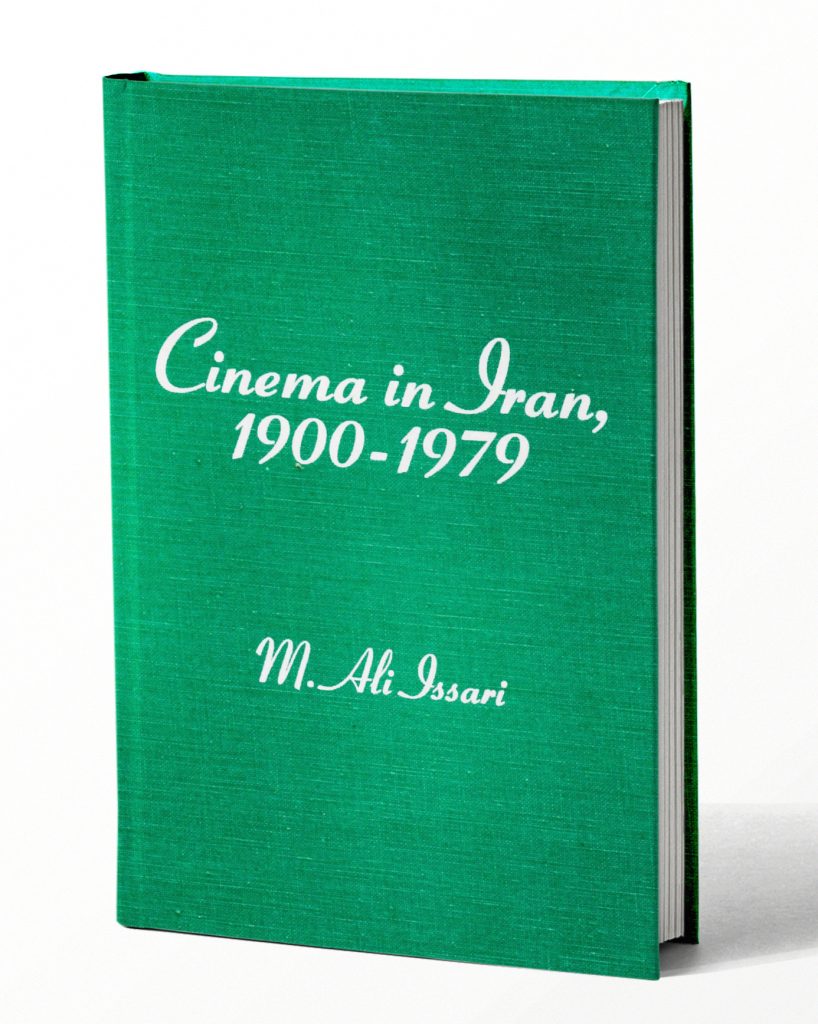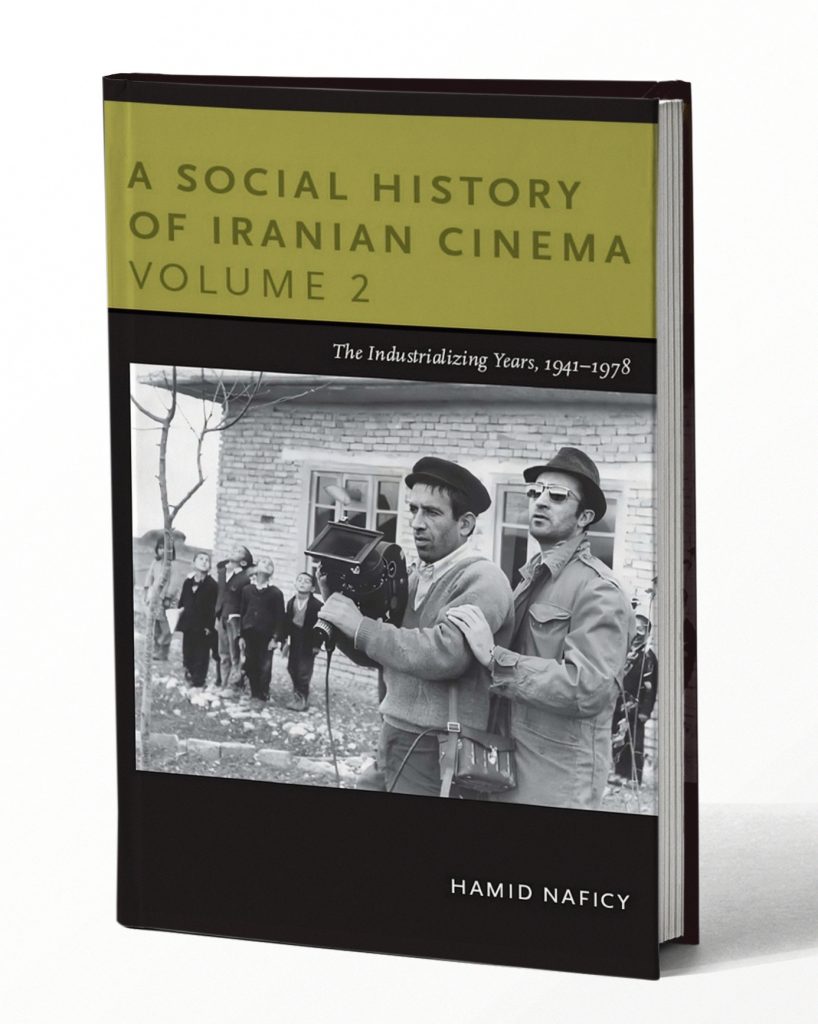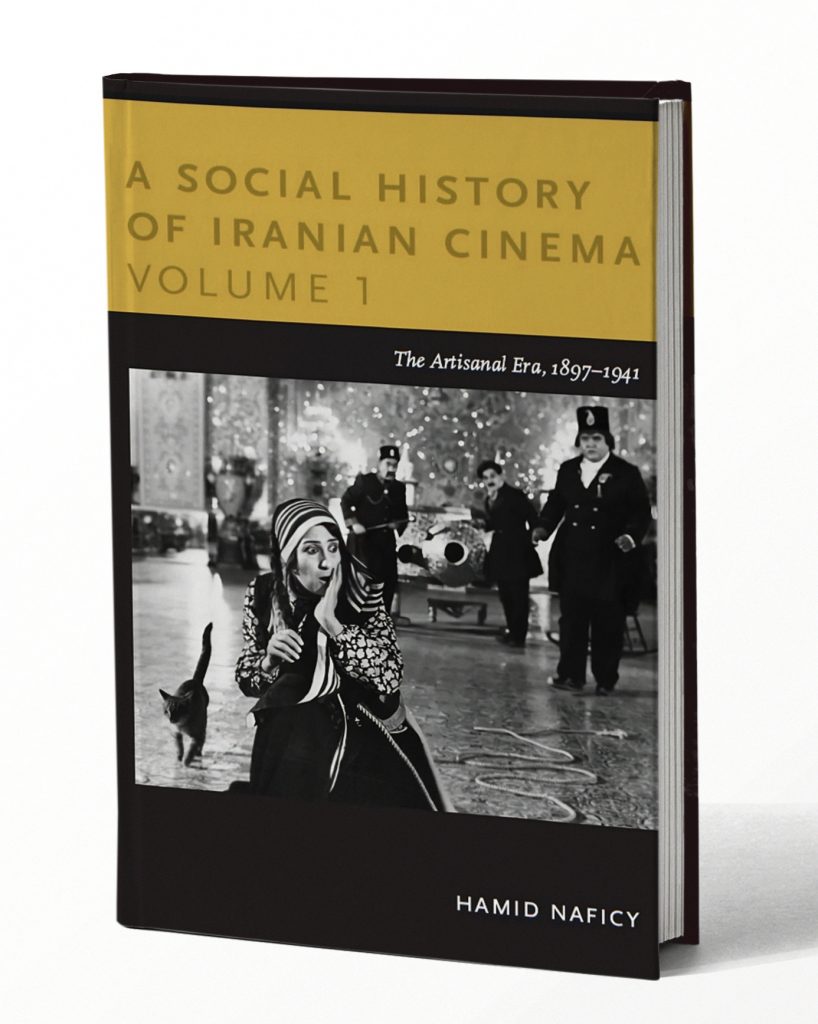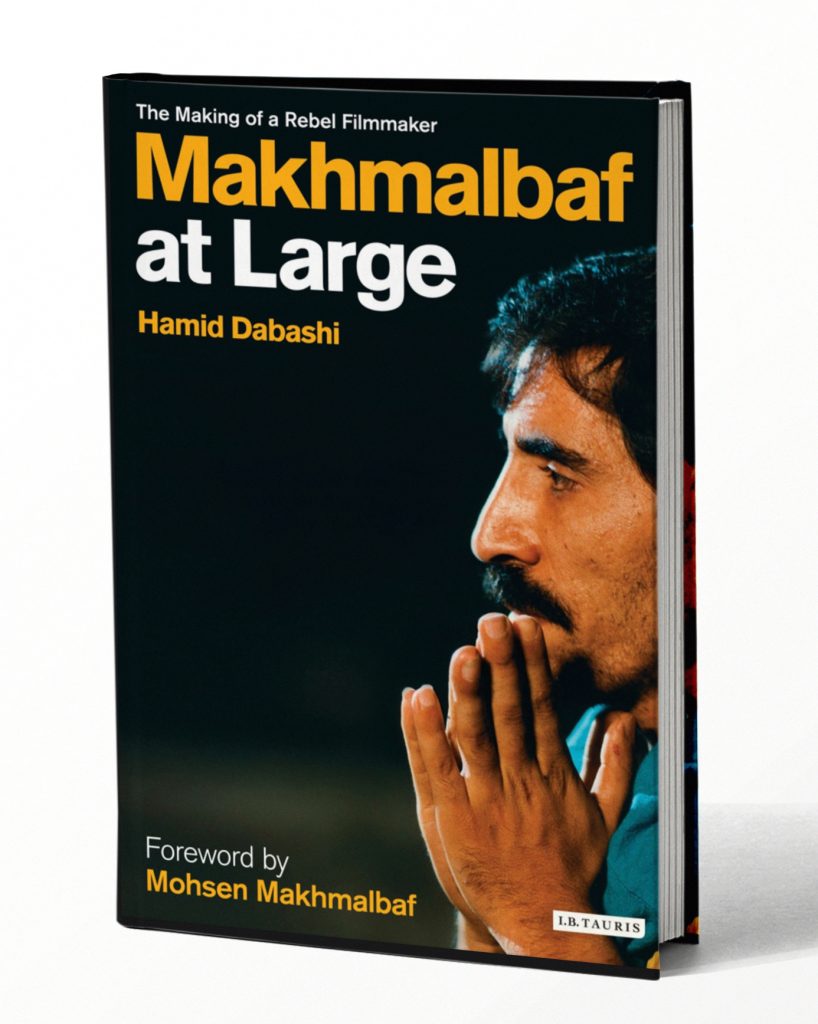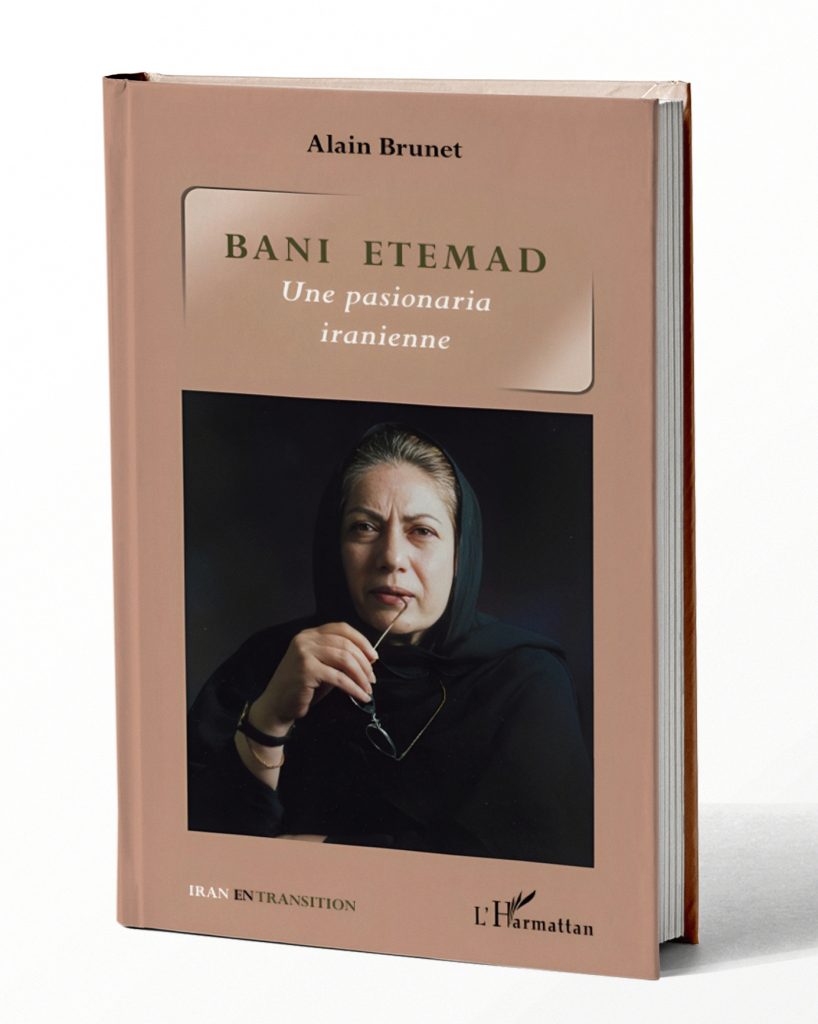

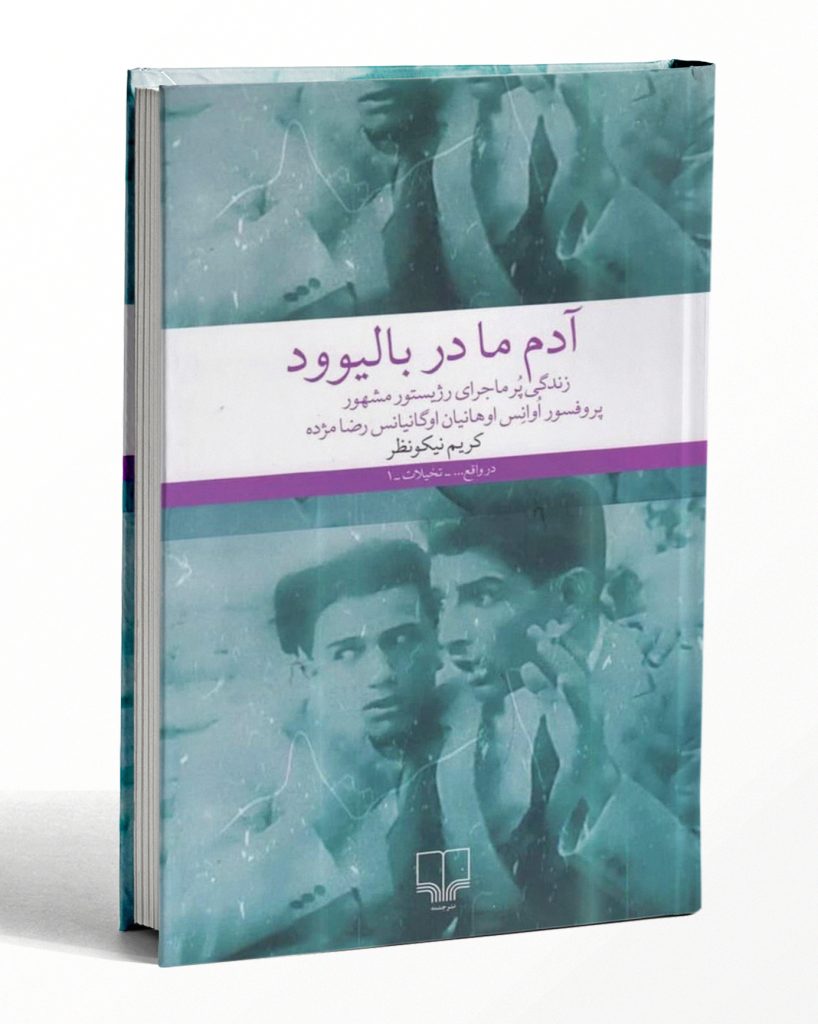




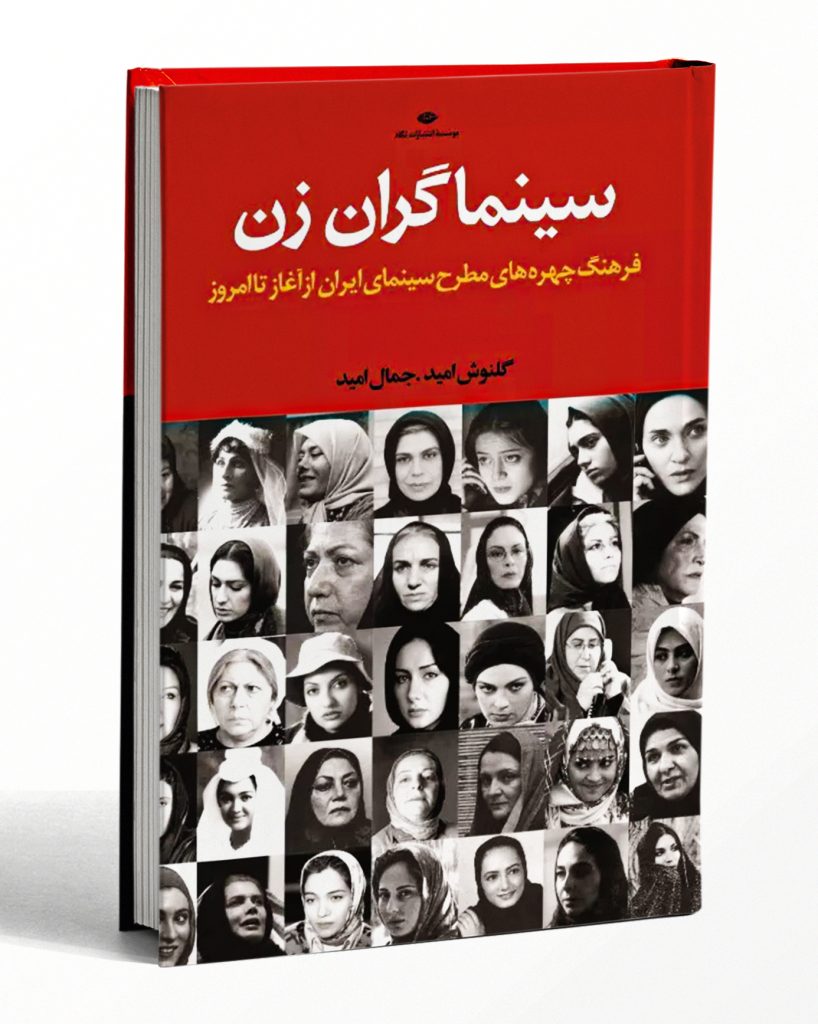




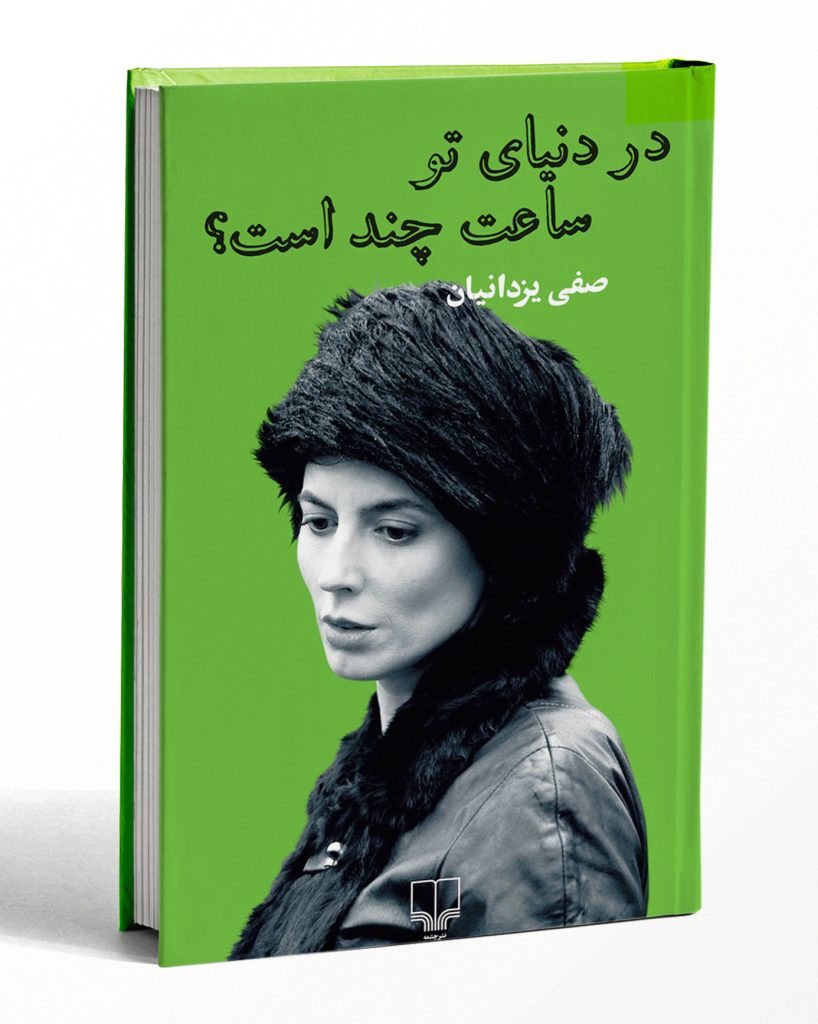







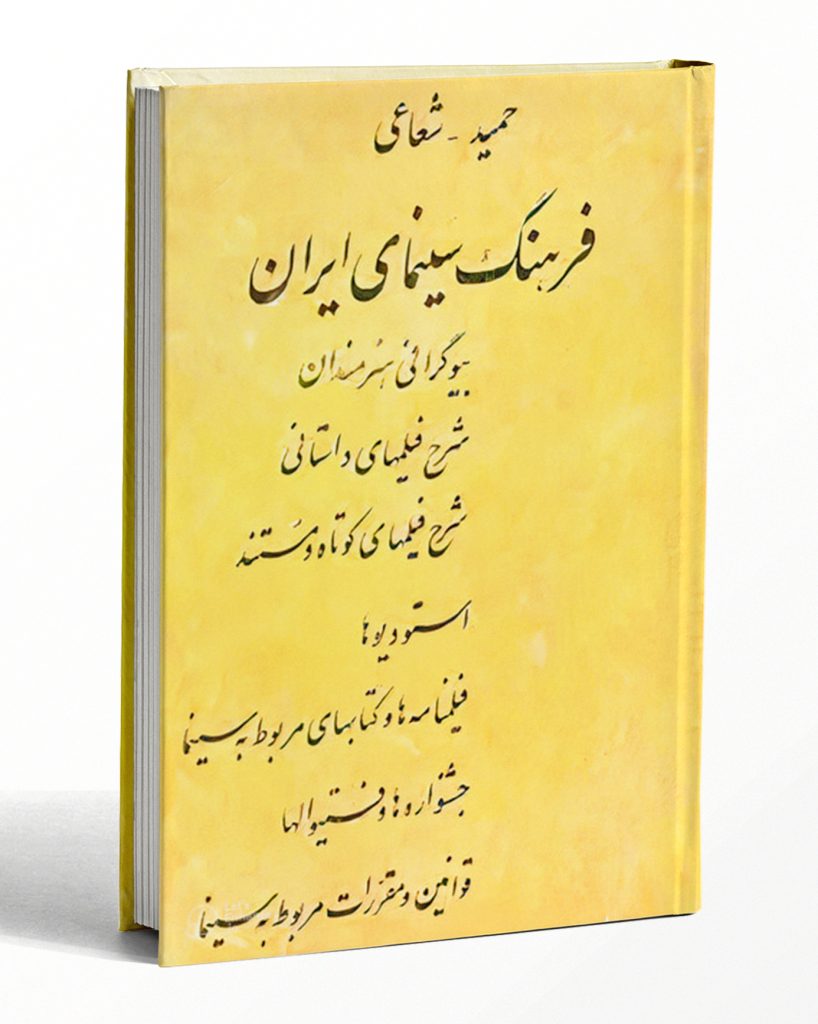

Allegory in Iranian cinema : the aesthetics of poetry and resistance
Author: Michelle Langford (Author)
Summary:
"Iranian filmmakers have long been recognised for creating a vibrant, aesthetically rich cinema whilst working under strict state censorship regulations. As Michelle Langford reveals, many have found indirect, allegorical ways of expressing forbidden topics and issues in their films. But for many, allegory is much more than a foil against haphazardly applied censorship rules. Drawing on a long history of allegorical expression in Persian poetry and the arts, allegory has become an integral part of the poetics of Iranian cinema. Allegory in Iranian Cinema explores the allegorical aesthetics of Iranian cinema, explaining how it has emerged from deep cultural traditions and how it functions as a strategy for both supporting and resisting dominant ideology. As well as tracing the roots of allegory in Iranian cinema before and after the 1979 revolution, Langford also theorizes this cinematic mode. She draws on a range of cinematic, philosophical and cultural concepts - developed by thinkers such as Walter Benjamin, Gilles Deleuze, Pier Paolo Pasolini, Christian Metz and Vivian Sobchack - to provide a theoretical framework for detailed analyses of films by renowned directors of the pre-and post-revolutionary eras including Masoud Kimiai, Dariush Mehrjui, Ebrahim Golestan, Kamran Shirdel, Majid Majidi, Jafar Panahi, Marziyeh Meshkini, Mohsen Makhmalbaf, Rakhshan Bani-Etemad and Asghar Farhadi. Allegory in Iranian Cinema explains how a centuries-old means of expression, interpretation, encoding and decoding becomes, in the hands of Iran's most skilled cineastes, a powerful tool with which to critique and challenge social and cultural norms."--Bloomsbury Publishing
Publisher: Bloomsbury Academic, London, 2019
Language: English
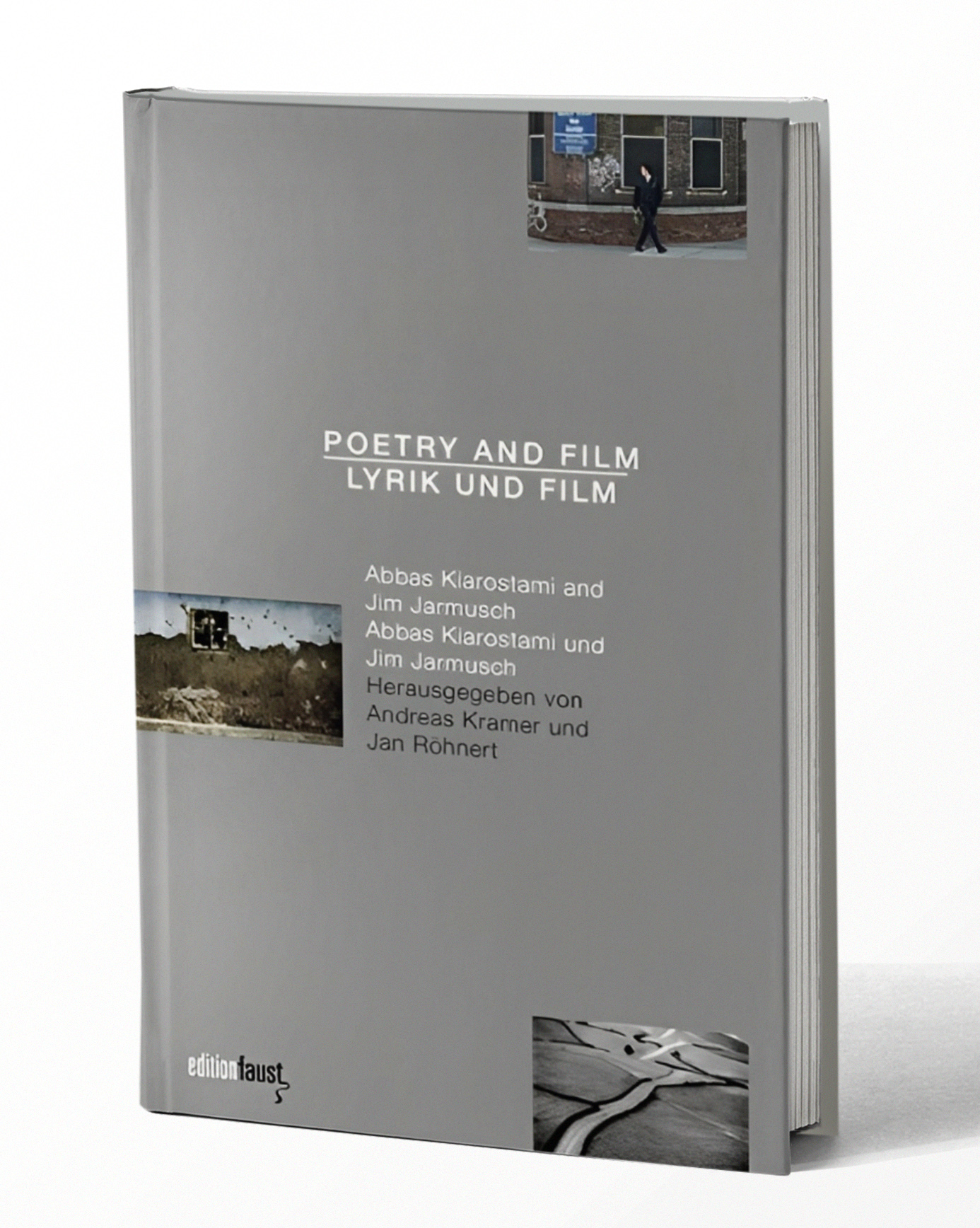
Abbas Kiarostami and Jim Jarmusch
Author: Andreas Kramer (Editor), Jan Volker Röhnert (Editor)
Summary:
The Wind Will Carry Us“ Die Beziehungen des großen internationalen Kinos zum literarischen Genre der Lyrik sind wenig erforscht. Zwei der bedeutendsten Regisseure des gegenwärtigen Kinos, Jim Jarmusch (* 1953) und Abbas Kiarostami (1940–2016), haben in ihren Filmen wiederholt mit Lyrik gearbeitet oder sie gar zum Thema ihrer Filme gemacht. Der Sammelband untersucht am Beispiel des Schaffens von Jarmusch und Kiarostami, wie lyrische Strukturen, Gesten und Traditionen auf der Leinwand umgesetzt werden und dabei ihre eigene filmische Dynamik entwickeln.
Publisher: Edition Faust, Frankfurt am Main, 2020
Language: English
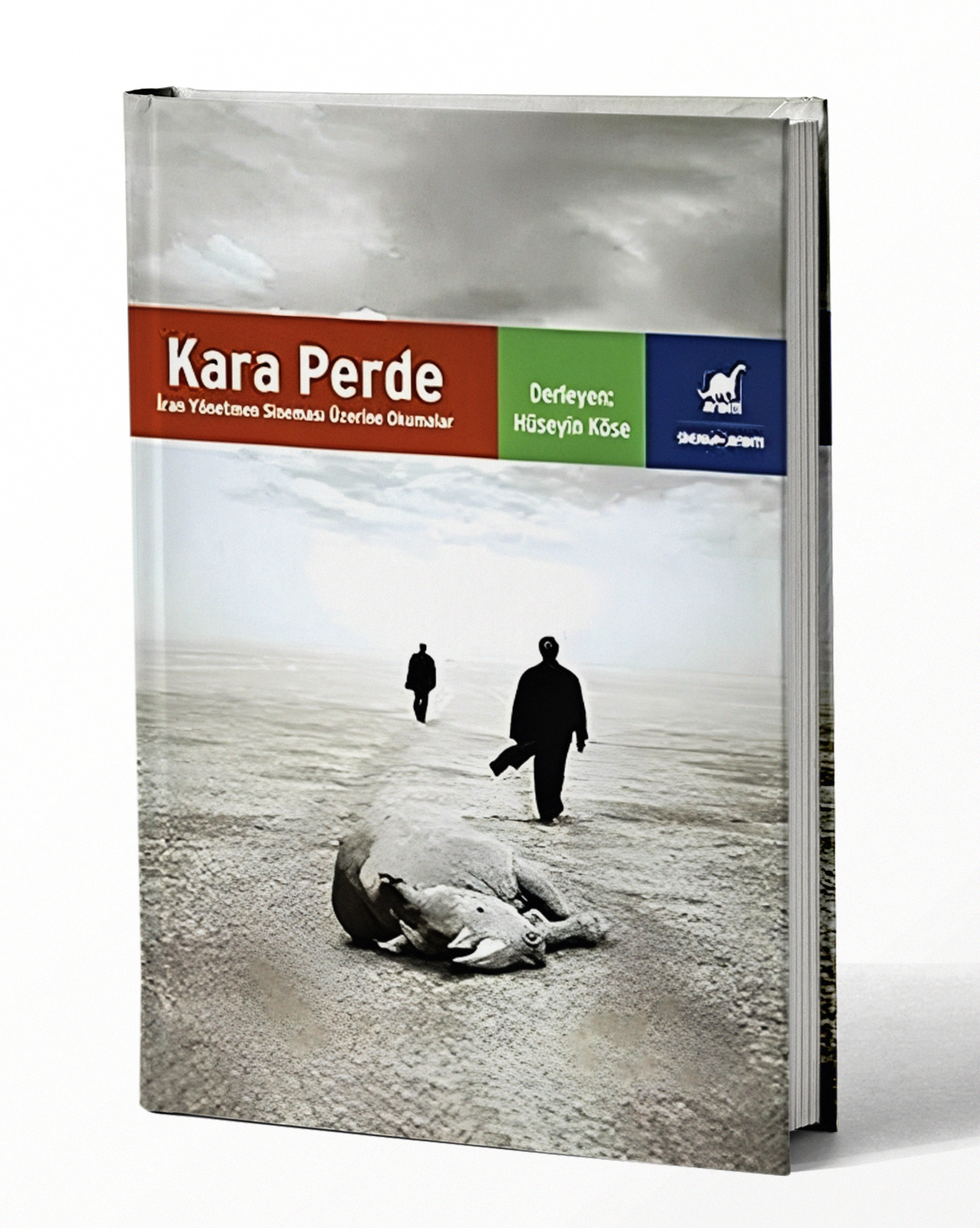
Kara perde : İran yönetmen sineması üzerine okumalar
Author: Hüseyin Köse (Editor), Enis Rıza Sakızlı (Editor), Papatya Tıraşın (Redaktor)
Summary:
Mutlak kesinliklerle dolu bir akıl yürütmenin can sıkıcı saydamlığı olmasa, rastlantının bozguncu diline hükmetmenin yaralayıcı şiirinden söz edebilir miydik? Ya manevi yoksulluğun Farisi bakışı olmadan, sinemanın idyllic harmanından? Kara çarşafların kapkara hüznü dilsizliğin bastırılmış hırıltısına karıştığında, en iddiasız yaşamın en tantanasız görüntüsü bile patlamaya hazır bir silah olup çıkar hemen. Çünkü ölçülü mütevazılığın bakiyesi tekinsizdir her koşulda. İran sinemasının hesaplı ve ölçülü sükunetinde de uçsuz bucaksız düş gücünün göz açıp kapayıncaya kadar yakıcı düşüncelere tercüme edilişinin imkansız güzelliğiyle karşılaşırız; gerçeklikle iç içe geçmiş gizemlerin, türlü paralaks hallerinin farklı anlamsal katmanlarıyla. Bu filmlerde sinematografik dilin her bakımdan kurmaya özen gösterdiği dinginlik, sözcüğün gerçek anlamında sevinçli bir dileyiştir. Coğrafyanın, kelimenin tam anlamıyla bir "kader" olarak algılandığı bir yaşamın ihtiva ettiği kırılgan şiirsellikle katıksız iyimserlik arasında bitimsiz bir gidiş-geliş. Bu öylesine zahmetli bir mesaidir ki, apaçık ortada duranın ikinci kez adlandırılmasını ya da farkına varılmasını fuzuli bir çabaya dönüştürür. Anlamayı groteskleştirir, belirsizliği daha da belirginleştirirken... Farisi sinemanın belli başlı filmlerine adlarını veren sözcüklerin anlam bagajı o denli geniştir ki, belki de bu yüzden Ghobadi'nin evreni baştan sona bir Gergedan Mevsimi'dir; Macidi'ninki meşum bilinçlerin ve kusurlu bedenlerin karanlığı içinden devşirilmiş Tanrı'nın Rengi; şehvet yoğunluğuyla köreltilmiş çağcıl aşkları adeta yağmur damlalarının saflığıyla yeniden arıtmayı öneren Baran; Mahmelbaf'ınki ömrü Sükut'a adanmış bir arının her sabah küçük bir cam kavanozda yeni baştan akort ettiği Hayat; Kiarostami'ninki bütün bir agonist çabayı ağızda sulu bir hazza dönüştüren Kirazın Tadı; Penahi'ninki Daire'vi ve tekdüze bir yaşamın metafizik şiddetiyle sendeleyerek farklı bir gerçeğe uyanmış insanların yüzünde parçaladığı bir Ayna; Mehrjui'ninki pastoral nitelikli bir direnişi toplumsal gerçekliğin masalsı diline tercüme eden İnek; Farhadi'ninki ne pahasına olursa olsun hayatta kalma iradesine eşlik eden özgürlük arayışını ahlaksal linç eyleminin doksan derecelik dik açısıyla birleştiren Elly Hakkında ve final sahnesinde ebeveynlerine yönelik yaşadığı seçim yapma zorluğuyla kültürel tercihleri arasında sıkışıp kalmış bir toplumun mütereddit halini somutlayan Bir Ayrılık; son olarak da, Kara Ev'lerin ürperten aydınlığını tozlu Tahran sokaklarının büyülü görselliğiyle harmanlayarak fazladan şiir katan Füruğ, v.s.
Farisi film kahramanlarının her koşulda "yaşamı başarmasının" şiir yüklü dermansızlığına gelince; çaresizlik dolu görüntülerinin kupkuru alevi bile ışıksız kalplere baruttur çoğu zaman; en yakıcı umutsuzlukların meydan okuyucu tavrı karşısındayken bile, umarsızca çekip gitmelerin esrik vapuru gibidirler. Ez cümle, nicedir hayatın yaptığı şaşmaz kurgunun insanda uyandırılabilecek yegane acayip gerçeklik kurgusu olduğunu fısıldıyor kulağımıza İran sineması. Unamuno'nun deyişiyle, yaşamın trajik kurgusu yerine, gün geçtikçe daha da ağırlaşan trajik duygusunu.
Publisher: Ayrıntı Yayınları, İstanbul, 2014
Language: Turkish

El viento nos llevará Le vent nous emportera
Author: Abbas Kiarostami, Mahmoud Kalari, Peyman Yazdanian, Marin Karmitz, Behzad Dorani, Noghre Asadi, Roushan Karam Elmi, Pat Collins, Fergus Daly, Mostra Internazionale d'Arte Cinematografica
Summary:
El rodaje de una película en la pequeña localidad kurdo-iraní de Siah Dareh provocará una pequeña revolución entre los habitantes del pueblo, convencidos de que los miembros del rodaje son en realidad buscadores de un tesoro que se halla en el cementerio local
Publisher: dist. Avalon Distribucion Audiovisual, Madrid, D.L. 2011
Language:

Front cover image for In Begleitung des Windes Gedichte In Begleitung des Windes Gedichte
Author: Abbas Kiarostami
Summary:
Publisher: Suhrkamp, Frankfurt am Main, 2004
Language: German

La marionnette iranienne : ou les pouvoirs d’un objet hybride La marionnette iranienne : ou les pouvoirs d’un objet hybride
Author: Yassaman Khajehi
Summary:
La marionnette en Iran, depuis au moins dix siècles, participe à un "jeu" qui va au-delà des jeux théâtraux et scéniques. Tout en résistant aux contraintes sociales et politiques, par sa nature hybride, elle se renouvelle en toute occasion et revendique à sa guise la liberté de parole et de geste.
Publisher: Classiques Garnier, Paris, 2020
Language: French

Le cinéma iranien : l’image d’une société en bouillonnement : de la Vache au Goût de la cerise
Author: Hormuz Kéy, Marc Ferrero, Jean-Claude Carrière
Summary:
L'auteur rappelle les origines de l'expression cinématographique proprement iranienne et les films les plus marquants. Il explique comment les auteurs ont détourné les rigueurs extrêmes de la censure par l'utilisation de métaphores, depuis La Vache, réalisé par Dariush Merdjoui en 1969, à l'époque du Shah, jusqu'au Goût de la cerise, d'Abbas Kiarostami, en 1997, à l'époque des mollahs
Publisher: Karthala, Paris, 1999
Language: French

The new wave cinema in Iran : a critical study
Author: Parvīz Jāhid
Summary:
The Birth of the Iranian New Wave Cinema is an historical and analytical study of the Iranian New Wave Cinema (Mowj-e No) as an artistic and intellectual movement that came to its best early productions between 1958 and 1978. As the movement has a long history, Parviz Jahed focuses on the development and the early progression of the movement in the 1960s and explores its emergence and development in the context of the cultural and social conditions of Iran during this period
Publisher: Bloomsbury Academic, New York, NY, 2022
Language: English
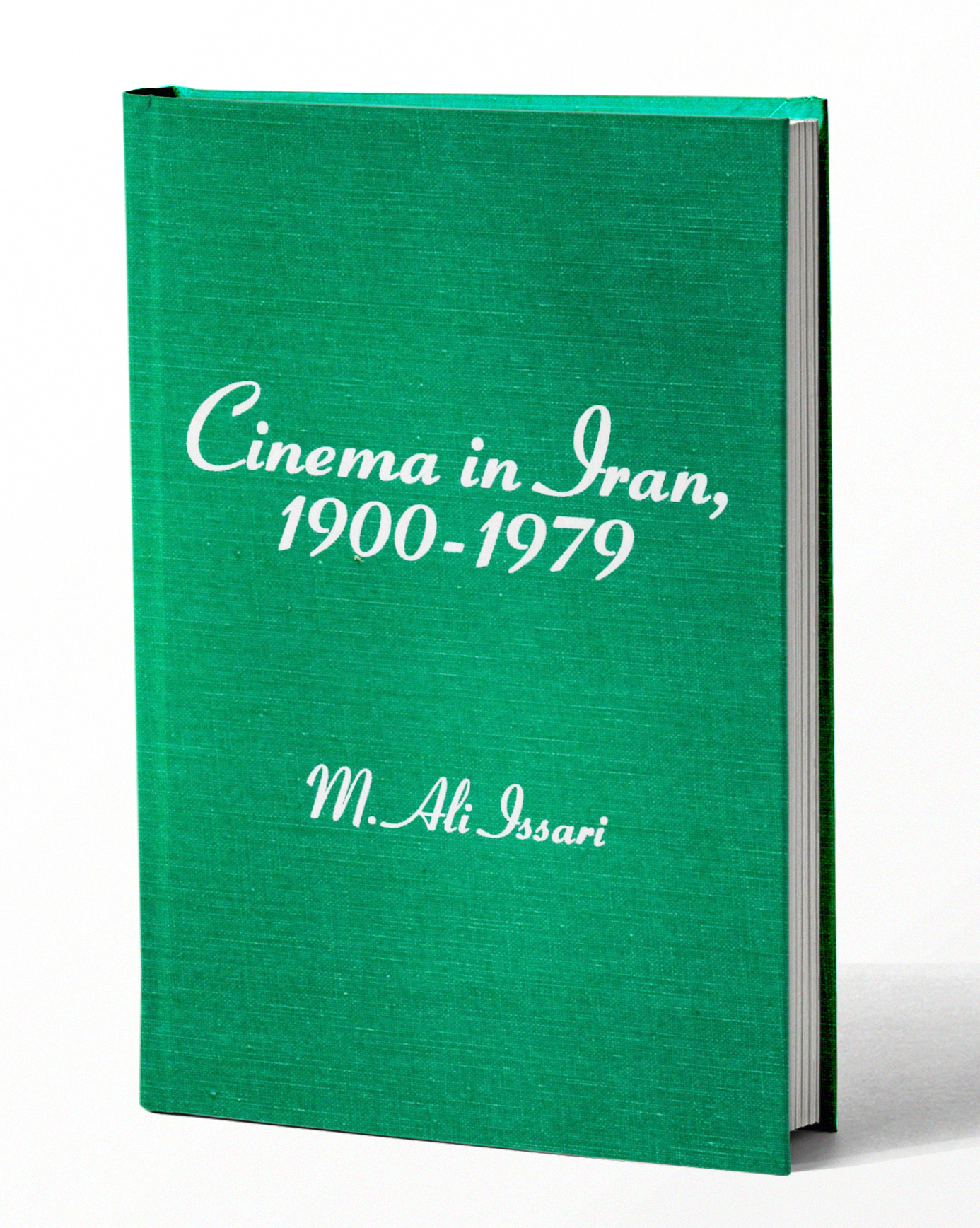
Cinema in Iran, 1900-1979
Author: Mohammad Ali Issari
Summary:
Publisher: Scarecrow Press, Metuchen, N.J., 1989
Language: English
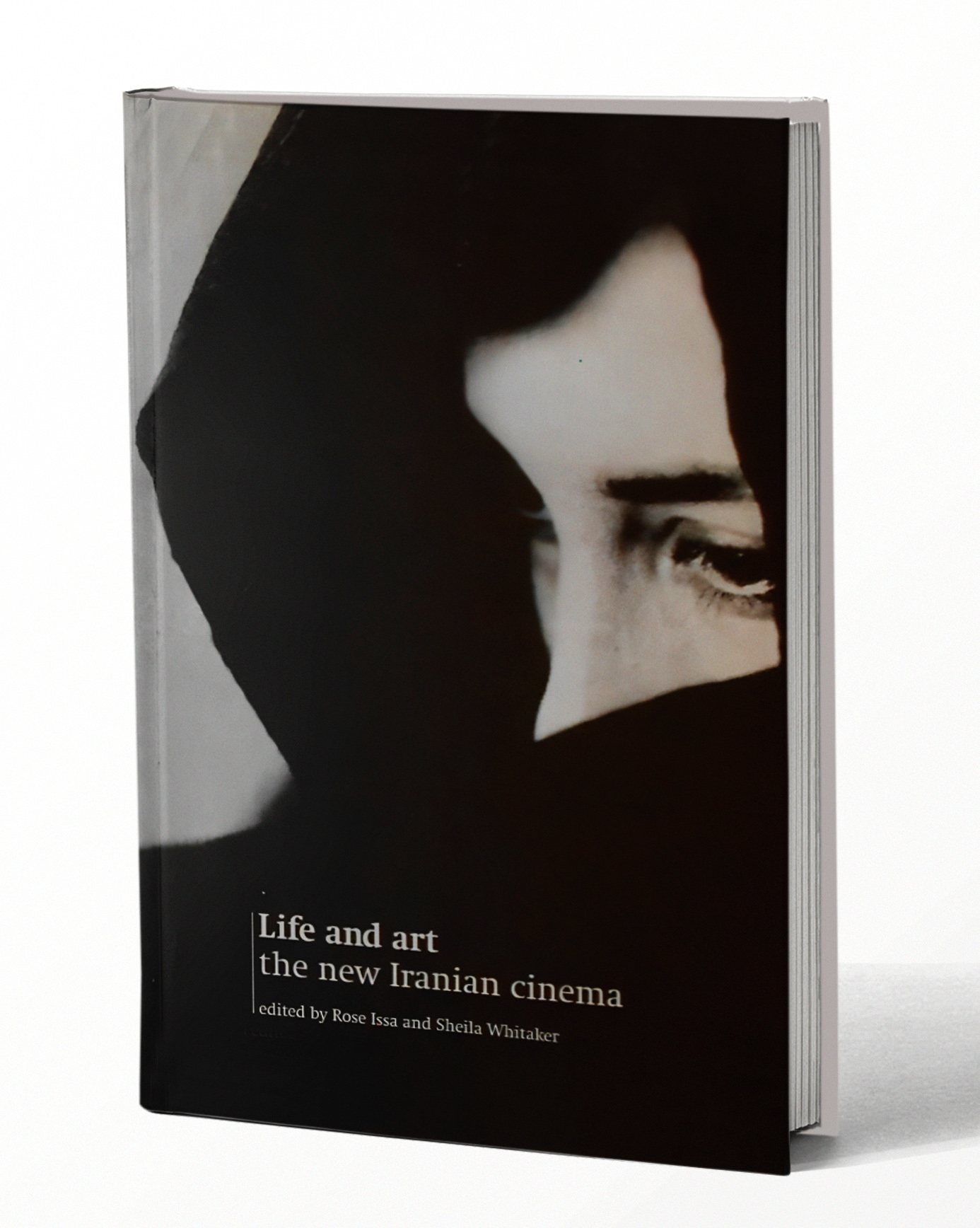
Life and art : the new Iranian cinema
Author: Rose Issa, Sheila Whitaker
Summary:
Book edited by Rose Issa and Sheila Whitaker to coincide with a major retrospective on Iranian Cinema at the National Film Theatre in 1999. There are overviews of the history of cinema in Iran and its recent renaissance by the editors and predominantly Iranian authors. It includes focuses on a number of filmmakers: Rakhshan Bani-Etimad, Bahram Bayzai, Abolfazl Jalili, Abbas Kiarostami, Mohsen Makhmalbaf, Dariush Mehrjui and Sohrab Shahid Saless.
Publisher: National Film Theatre, London, 1999
Language: English

Le réel, face et pile : le cinéma d’Abbas Kiarostami
Author: Youssef Ishaghpour
Summary:
La fin de la modernité, celle " des grands récits ", de la réflexivité, de la négativité, de l'historicité, a reconnu son cinéaste en Abbas Kiarostami, venu d'un monde où le moderne n'avait jamais pénétré. Non plus " le nihilisme " mais " le goût du réel ", le retour aux choses mêmes, comme un (re)commencement du cinéma retrouvant son sens premier et sa vocation originelle d'être une " révélation du monde en son image " (Bazin). Cependant pour Kiarostami, l'image du cinéma qui permet de révéler le réel renvoie aussi à elle-même par exigence envers sa propre réalité. Le minimalisme post-moderne se complète d'un art conceptuel se prenant pour son propre objet. La réalité filmée par le cinéma se révèle être ainsi " une réalité de cinéma ", avec sa puissance d'illusion, de feintise et de faux. C'est par la mise en œuvre de cette part du faux et par différence avec elle que le mensonge de l'art sert de détours pour Kiarostami : comme moyen de retour au monde et à la musique du paysage. Cet essai monographique et théorique à propos du Cinéma d'Abbas Kiarostami constitue le troisième volet d'un triptyque consacré à l'Iran dont les deux autres ont été déjà publiés aux Editions Farrago : La Miniature persane : les couleurs de la lumière, le miroir et le jardin et Tombeau de Sadegli Hedayat
Publisher: Farrago, Tours, ©2000
Language: French
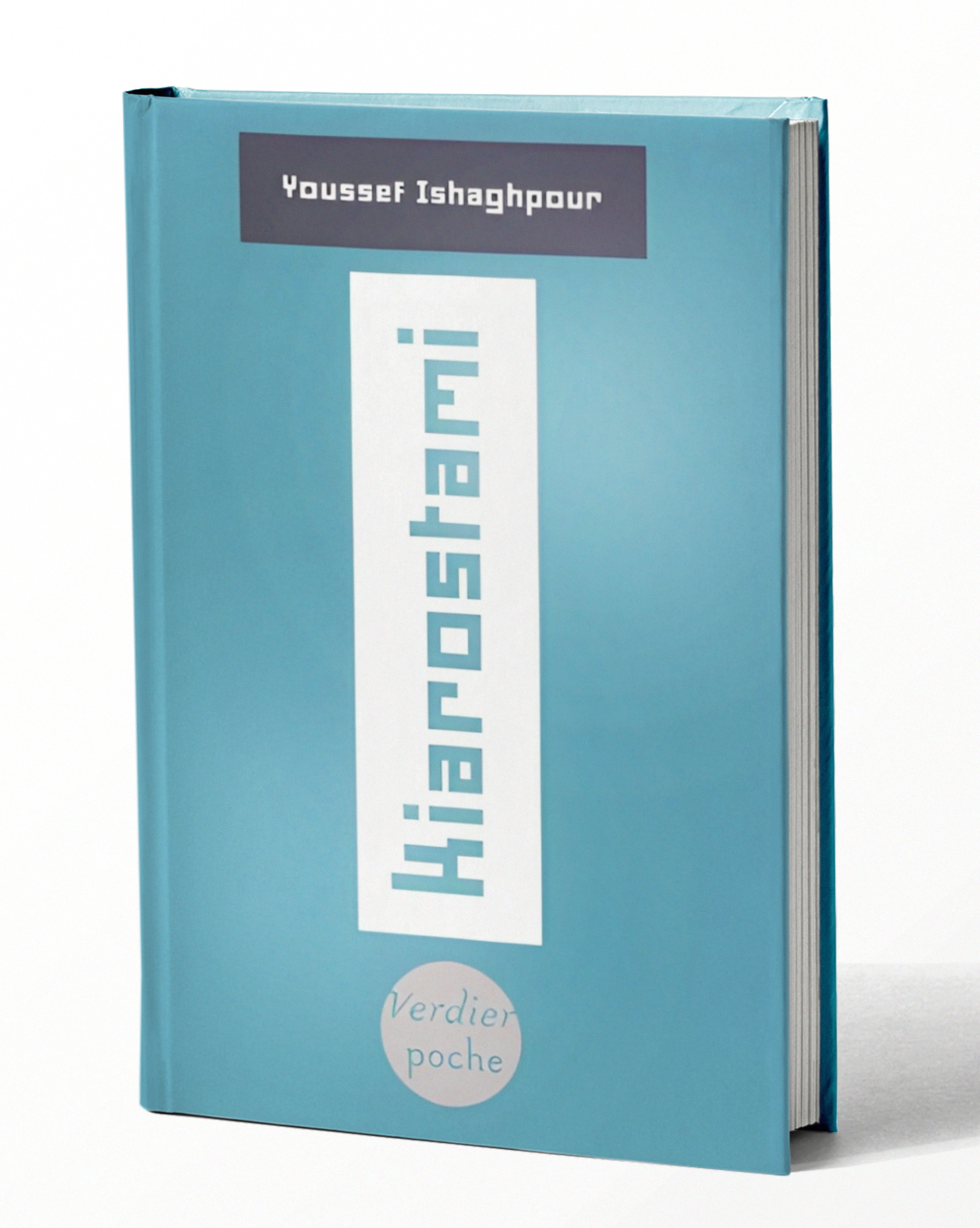
Kiarostami
Author: Youssef Ishaghpour
Summary:
Publisher: Editions Verdier, Lagrasse, 2021
Language: French

A cinematic history Iranian cosmopolitanism : a cinematic history
Author: Golbarg Rekabtalaei
Summary:
From popular and 'New Wave' pre-revolutionary films of Fereydoon Goleh and Abbas Kiarostami to post-revolutionary films of Mohsen Makhmalbaf, the Iranian cinema has produced a range of films and directors that have garnered international fame and earned a global following. Golbarg Rekabtalaei takes a unique look at Iranian cosmopolitanism and how it transformed in the Iranian imagination through the cinematic lens. By examining the development of Iranian cinema from the early twentieth century to the revolution, Rekabtalaei locates discussions of modernity in Iranian cinema as rooted within local experiences, rather than being primarily concerned with Western ideals or industrialisation. Her research further illustrates how the ethnic, linguistic, and religious diversity of Iran's citizenry shaped a heterogeneous culture and a cosmopolitan cinema that was part and parcel of Iran's experience of modernity. In turn, this cosmopolitanism fed into an assertion of sovereignty and national identity in a modernising Iran in the decades leading up to the revolution
Publisher: Cambridge University Press, Cambridge, 2019
Language: English

Asghar Farhadi : life and cinema
Author: Tina Hassannia
Summary:
In 2012, A Separation became the first Iranian film to win the Academy Award for Best Foreign Language Film. This was a milestone not just for Iranian cinema, but for the film's director, Asghar Farhadi. Though now celebrated world-wide ... Farhadi's career nevertheless remains under-explored among international audiences ... [this] provides the first extensive analysis of this important auteur's work, from his beginning as a screenwriter and earliest features to ... The Past. Including a long and in-depth interview with the director himself, [this] details the filmmaker's influences, development and maturation, providing the first English introduction to this new Iranian master"--Publisher's description
Publisher: The Critical Press, Raleigh, NC, 2014
Language: English

The Globalizing Era, 1984-2010 A Social History of Iranian Cinema, Volume 4 : The Globalizing Era, 1984-2010
Author: Hamid Naficy
Summary:
Hamid Naficy is one of the world's leading authorities on Iranian film, and A Social History of Iranian Cinema is his magnum opus. Covering the late nineteenth century to the early twenty-first and addressing documentaries, popular genres, and art films, it explains Iran's peculiar cinematic production modes, as well as the role of cinema and media in shaping modernity and a modern national identity in Iran. This comprehensive social history unfolds across four volumes, each of which can be appreciated on its own.The extraordinary efflorescence in Iranian film, TV, and the new media since the consolidation of the Islamic Revolution animates Volume 4. During this time, documentary films proliferated. Many filmmakers took as their subject the revolution and the bloody eight-year war with Iraq; others critiqued postrevolution society. The strong presence of women on screen and behind the camera led to a dynamic women's cinema. A dissident art-house cinema-involving some of the best Pahlavi-era new-wave directors and a younger generation of innovative postrevolution directors-placed Iranian cinema on the map of world cinemas, bringing prestige to Iranians at home and abroad. A struggle over cinema, media, culture, and, ultimately, the legitimacy of the Islamic Republic, emerged and intensified. The media became a contested site of public diplomacy as the Islamic Republic regime as well as foreign governments antagonistic to it sought to harness Iranian popular culture and media toward their own ends, within and outside of Iran. The broad international circulation of films made in Iran and its diaspora, the vast dispersion of media-savvy filmmakers abroad, and new filmmaking and communication technologies helped to globalize Iranian cinema.A Social History of Iranian CinemaVolume 1: The Artisanal Era, 1897-1941Volume 2: The Industrializing Years, 1941-1978Volume 3: The Islamicate Period, 1978-1984Volume 4: The Globalizing Era, 1984-2010
Publisher: Duke University Press, Durham, 2012
Language: English

A social history of Iranian cinema. Volume 3, The Islamicate period, 1978-1984
Author: Hamid Naficy
Summary:
The third volume of this sweeping series covers the period of the Islamic Revolution and its immediate aftermath. Naficy details the destruction of Iran s movie theaters by Revolutionaries, the attempts of amateur and professional filmmakers to capture the action of the Revolution on film in real time, and the post-Revolutionary consolidation of the film industry
Publisher: Duke University Press, Durham [N.C.], 2012
Language: English

A social history of Iranian cinema. Volume 2, The industrializing years, 1941-1979
Author: Hamid Naficy
Summary:
Social history of Iranian cinema that explores cinema's role in creating national identity and contextualizes Iranian cinema within an international arena
Publisher: Duke University Press, Durham, N.C., 2011
Language: English
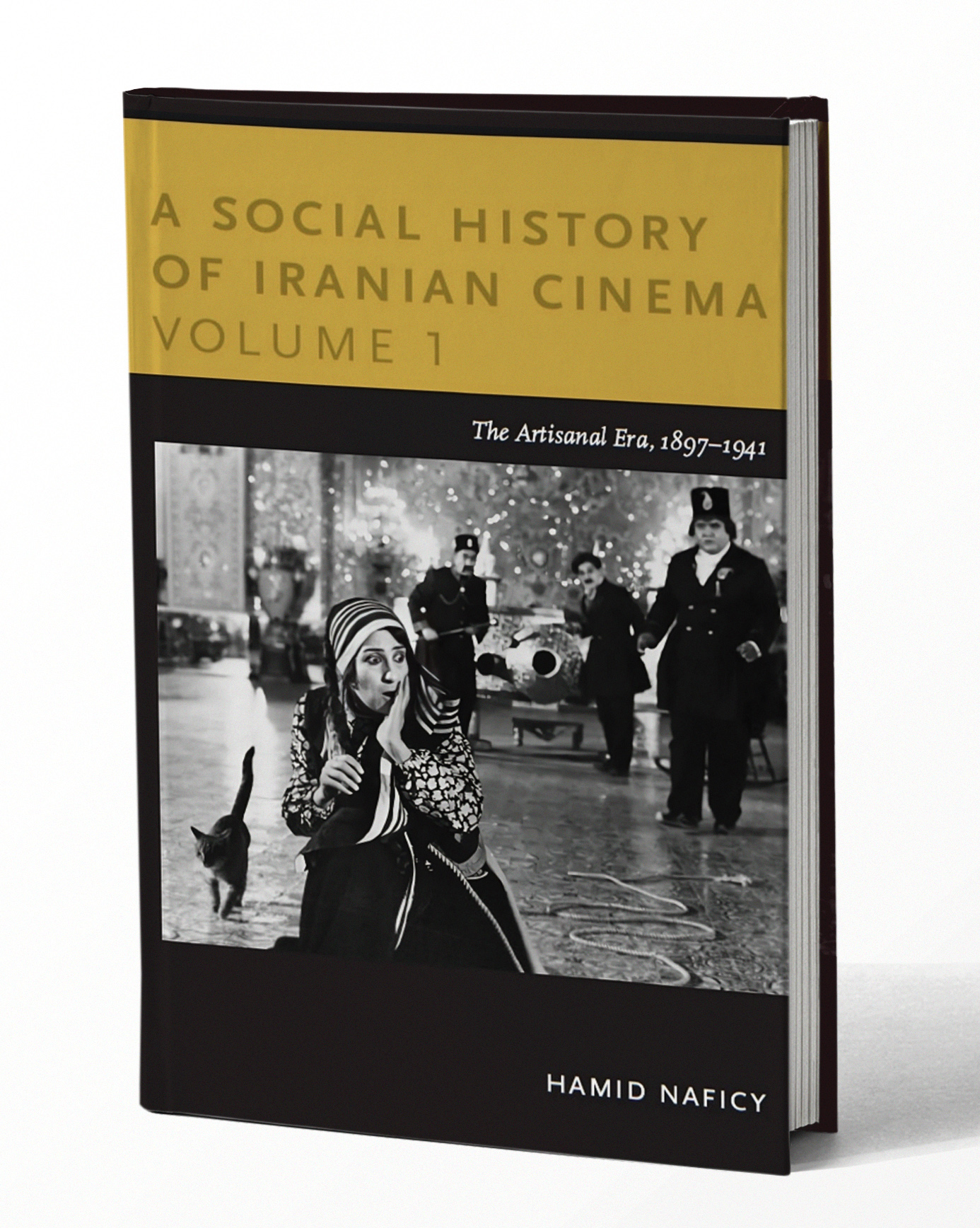
The artisanal era, 1897-1941 A social history of Iranian cinema. Volume 1, The artisanal era, 1897-1941
Author: Hamid Naficy
Summary:
Social history of Iranian cinema that explores cinema's role in creating national identity and contextualizes Iranian cinema within an international arena. The first volume focuses on silent era cinema and the transition to sound
Publisher: Duke University Press, Durham [N.C.], 2011
Language: English
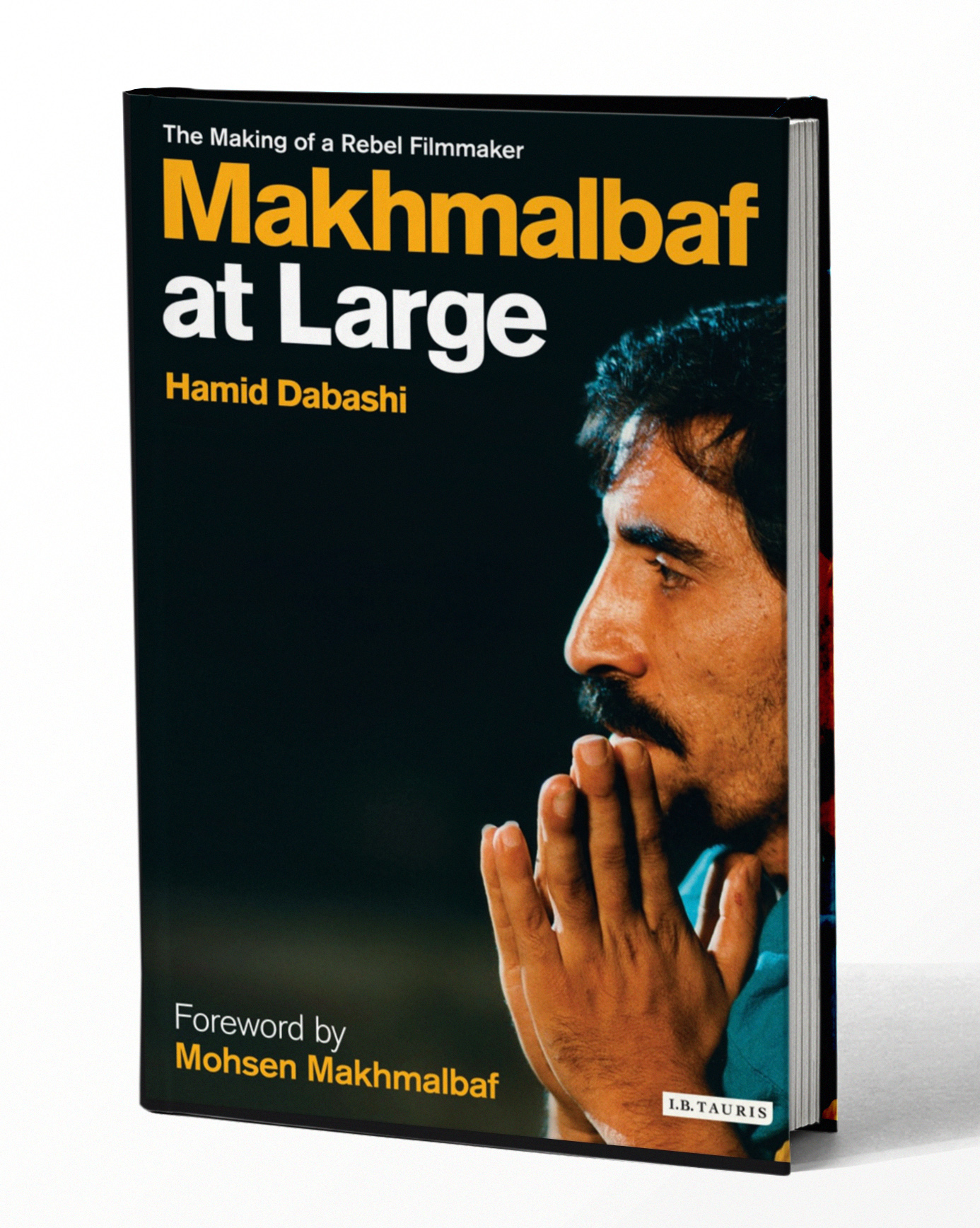
Makhmalbaf at large : the making of a rebel filmmaker
Author: Hamid Dabashi
Summary:
The name of Mohsen Makhmalbaf is almost synonymous with the dramatic rise of Iranian cinema in the aftermath of the Islamic Revolution, and over the last 25 years, his career as filmmaker and writer has reflected the history of his homeland and the fate of its neighbours
Publisher: I.B. Tauris, London, 2008
Language: English

Esmail Koushan through the lens of Mahmoud Koushan Final sequence : Esmail Koushan through the lens of Mahmoud Koushan
Author: Muḥammad Saʻīd. Ḥabashī, Maḥmūd Kūshān
Summary:
This is the story of a man who grows up in Tehran at a time when Iran has no film industry, travels to Berlin to study law. gets caught up in WWIl, charms his way into production studios, earns a Ph.D. in economics in Vienna while honing his cinematic skills, finds an escape route in the dying days of the war via Syria and Bulgaria to Istanbul where he runs into his long-separated brother, falls for a Greco-Turkish girl, and driven by an unrelenting pioneering spirit that will define his future, decides to dub foreign films into Persian before he returns home with his bride-brother and film reels in tow. And the rest, as they say, is history. With more than ninety features to his name, the adventurous life of Esmail Koushan, Father of Iranian Cinema, seen through the lens of his equally enterprising younger brother, the cinematographer Mahmoud Koushan, is an indelible chapter in the history of the seventh art. Written in hindsight to portray how one man changed a whole generation's cinematic landscape. Final Sequence is a must read for all who aspire to forging their own destiny against all odds, no matter what their calling." -- Amazo
Publisher: Kambiz Koushan, [Los Angeles], 2022
Language: English

ReFocus : the films of Rakhshan Banietemad
Author: Maryam Ghorbankarimi
Summary:
Rakhshan Banietemad is one of the first female film directors in Iran. This book, the first English language study of her films and career, Iranian director Rakhshan Banietemad contains chapters by some of the most prominent scholars of Iranian cinema, as well as younger scholars with fresh points of view. Taking an interdisciplinary perspective, the book devotes special attention to Banietemad's understudied documentaries and films, including Under the Skin of the City (2000) and Tales (2014), while offering new perspectives on well-known works such as The Blue Veiled (1994) and The May Lady (1997). Focusing on questions of aesthetics and poetics, social realism, gender dynamics and the 'afterimages' and 'counter-memories' of revolution and war, the book also includes an in depth interview with Banietemad herself."-- Provided by publisher
Publisher: Edinburgh University Press, Edinburgh, 2021
Language: English
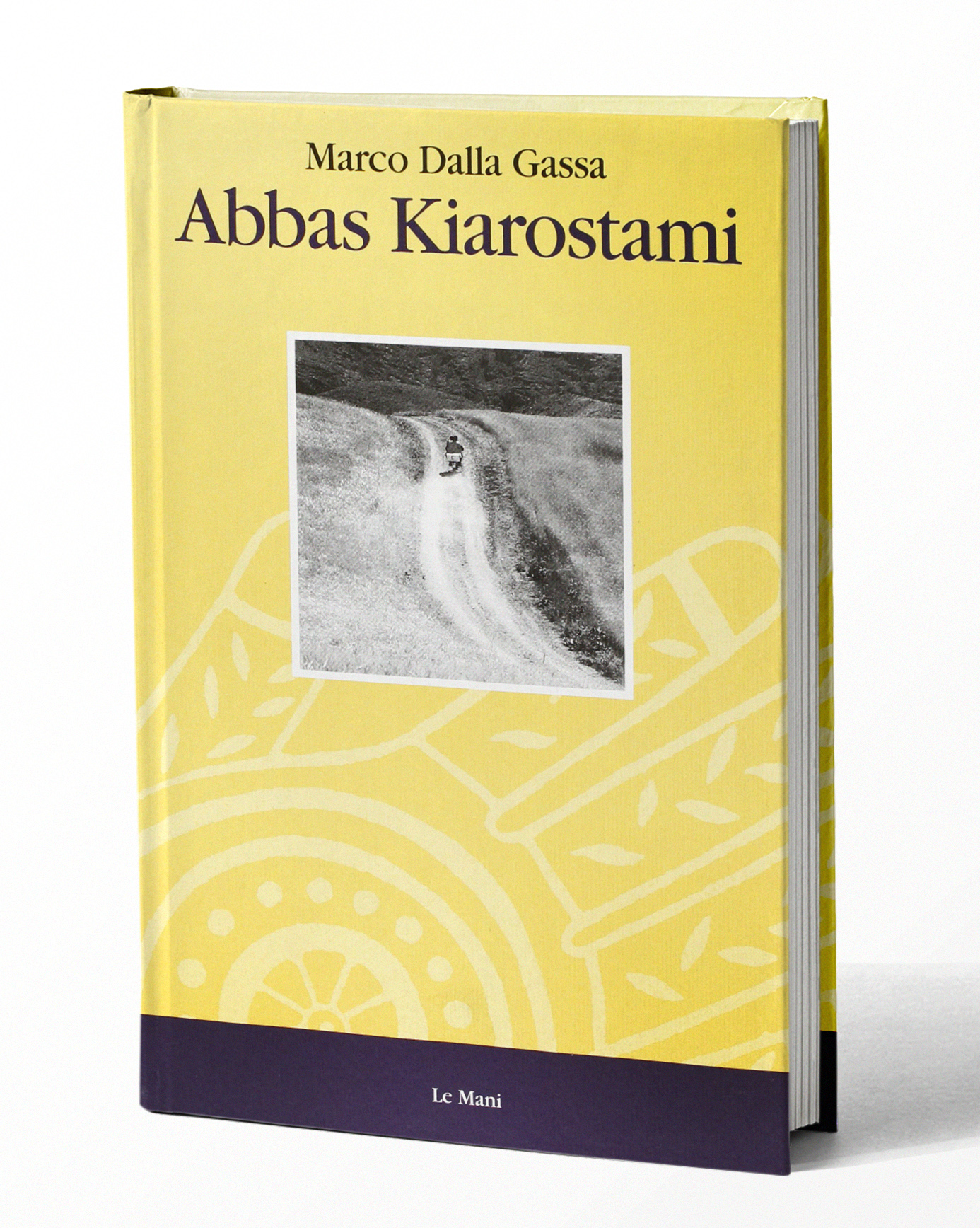
Des portes sans clés. Des clés sans portes. Abbas Kiarostami et la promesse du passage
Author: Marco Dalla Gassa, Stefano Pellò
Summary:
This paper discusses some hermeneutical problems relating to an installation by the famous Iranian director, photographer and artist Abbas Kiarostami (1940-2016), Doors without keys, presented at the Aga Khan Museum of Toronto during the winter of 2016. The authors provide a reading based on the idea that Kiarostami’s Doors can be interpreted as a significant manifestation of the cognitive processes involved in the spectator’s experience of a contemporary art museum. In order substantiate this theory, the two parts of the article proceed in a complementary way. The first part explores some of the hermeneutical options given to the visitors, dealing especially with the “philology” of the relevant processes of cultural transfers and translations, and focusing especially to the apparently compelling, but actually non-necessary, relations with the aesthetics of classical Persian poetry. The second part locates the installation in the habitat of contemporary art, finally showing how much Doors without keys calls for an idea of the aesthetic experience which can’t be confined in any culturalist perspective: an experience revolving around the phenomenological and proprioceptive dymensions of the observer, and their creative and bewildering implications
Publisher:
Language: English, Italian

Politique du cinema iranien: De l’ayatollah Khomeiny au president Khatami, Paris, CNRS, 2004
Author: Agnes Devictor, Philip Grant
Summary:
Par le nombre et la qualité des œuvres réalisées, la variété des thèmes explorés et le foisonnement de ses réalisateurs, le cinéma iranien s’affirme comme l’un des plus dynamiques du monde. Depuis le début des années 80, il ne cesse d’accumuler les plus hautes distinctions dans les festivals internationaux. Cette vitalité est aussi remarquable que paradoxale. Rien ne laissait supposer que ce cinéma survivrait à l’épreuve de la révolution islamique de 1979, à laquelle ont succédé huit années de guerre. Rien ne laissait supposer non plus que la République islamique, mise en place par l’âyatollâh Khomeyni, attacherait une telle importance au secteur culturel, et notamment au cinéma, au point de vouloir en faire un des principaux outils de l’islamisation de la société et ce, au moins jusqu’à l’élection du président Khâtami en 1997. Pour rendre compte de cette aventure cinématographique, ce livre recourt à un mode d’analyse original : il s’appuie sur une approche politique et institutionnelle. Politique du cinéma iranien retrace les enjeux que représente le cinéma au sein de ce régime, et la façon dont s’est élaborée une politique du cinéma sans équivalent. Sur la base d’une analyse filmographique de plus de trois cents titres, l’auteur recense par ailleurs les thématiques et les personnages marquants du cinéma iranien, ainsi que leur évolution depuis l’établissement de la République islamique. Face à un système de censure d’un puritanisme inégalité, qui empêche par exemple, toute relation tactile entre homme et femme à l’écran, elle met en lumière les réponses apportées par des réalisateurs aussi différents qu’Abbas Kiarostami, Jafar Panahi, Ebrahim Hatamikia, Rakhshan Bani Etemad ou Mohsen Makhmalbaf. Partant du cinéma, cet ouvrage offre aussi une lecture des rouages et des dynamiques à l’œuvre dans l’État iranien, et permet de saisir les enjeux majeurs qui structurent cette société.
Publisher: La Documentation française [etc.], Paris, 2005
Language: French
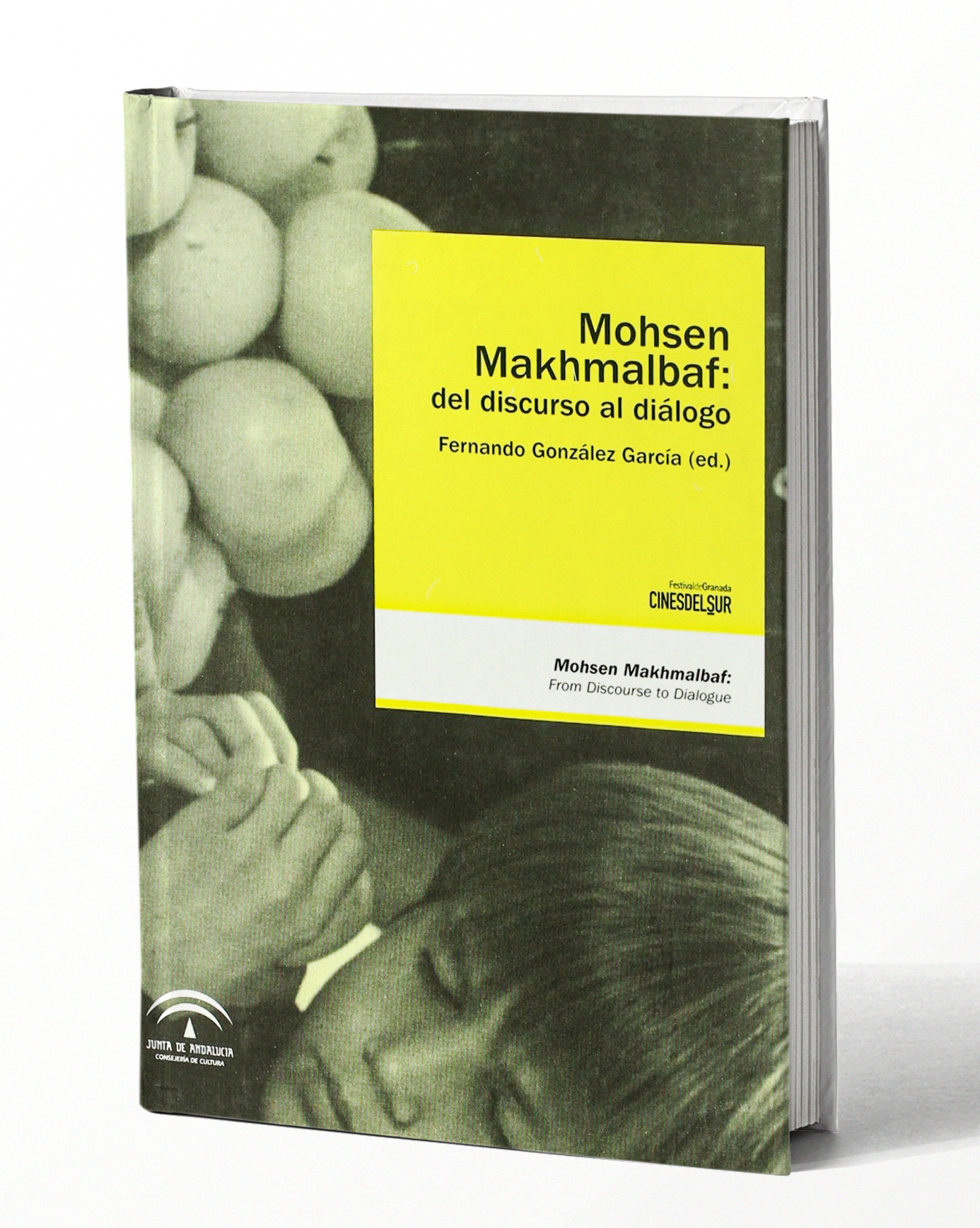
Mohsen Makhmalbaf : del discurso al diálogo
Author: Fernando González-García, Digitalia (Firm)
Summary:
Cada uno de los artículos que componen este libro parte de un planteamiento diferente, que se refiere sin embargo al todo o a momentos puntuales de la obra de Mohsen Makhmalbaf.
Publisher: Consejería de Cultura : Filmoteca de Andalucía ; Ocho y Medio, Libros de Cine, Sevilla, Madrid, [2008]
Language: Spanish

A colourful presence : the evolution of women’s representation in Iranian cinema
Author: Maryam Ghorbankarimi
Summary:
This book analyzes the changes in the representation of women in Iranian cinema since the 1960s, and investigates the reasons and motives for this. Iranian cinema, both before and after the Islamic Revolution, has been closely monitored by the ruling power, and has been utilized to relay messages and information that comply with the ruling ideology. However, it was only after the 1979 Revolution and the subsequent legitimization of cinema by the Islamic rule that cinema became widely accessible to the general public. Within this context, this book explores the changing roles of women in film production and their representation in films made between the 1960s and 2000s. Although some aspects of women's lives became stricter after the revolution, it was in the late 1980s that women took a prominent role both behind and in front of the camera for the first time. It is demonstrated here that such shifts were due to several factors, including factionalism within the Islamic Republic, shifts in the Iranian film industry, and the emergence of a group of highly educated film production teams, in addition to the fuller integration of women into the film industry, which is analyzed in particular detail. This study explores a number of representative female-centric films, with a focus on their cultural, social and cinematic contexts. Discussing these films with respect to the representation of women, it uses textual analysis as its base methodology. Interviews conducted with filmmakers and people active in the industry also serve to place the films into their historical, social, and political context
Publisher: Cambridge Scholars Publishing, Newcastle upon Tyne, 2015
Language: English

La caméra portée dans le cinéma iranien : esthétique, sociologie et ontologie
Author: Aveh Ghasemian, Antoine de Baecque, Sylvie Dallet
Summary:
Le rapport entre la réalité et le mouvement cinématographique nécessiterait une nouvelle relecture historique et esthétique à travers l'évolution de la caméra portée dans le cinéma mondial, notamment le cinéma iranien. Grâce au développement technologique, la caméra portée? à l'épaule et au poing? applique ses fonctions variées à l'image.Pour pallier le peu d'analyses ayant jusqu'ici abordé le sujet, cette étude transversale explore sa position, ses fonctions et son évolution dans la mise en scène de films iraniens, entre 1957 et 2016. Comparant des films pré- et post-révolutionnaires, elle met en lumière la différence entre la caméra portée et la caméra subjective, aborde également la Nouvelle Vague iranienne, les cinémas internationaux et l'emprise du cinéma direct mondial sur le cinéma de fiction iranien. Elle analyse la mutation de ce dispositif vers le cinéma documentaire-fiction iranien post-révolution (dès 1980) mais aussi son rôle dans le cinéma de fiction post-Mouvement vert (2009-2016), à travers deux films d'Asghar Farhadi : Une Séparation (2011) et Le Client (2016). Un outil qui permettra aux acteurs du monde du cinéma et aux cinéphiles vigilants de mieux appréhender l'utilisation de la caméra portée dans le cinéma iranien, rapportée à une tendance du cinéma international."-- Page 4 de la couverture de l'édition numérique
Publisher: l'Harmattan, Paris, 2022
Language: French

From Iran to Hollywood and some places in-between : reframing post-revolutionary Iranian cinema From Iran to Hollywood and some places in-between : reframing post-revolutionary Iranian cinema
Author: Christopher Gow
Summary:
The New Iranian Cinema has had a fascinating success story in world cinema and critics have hailed Iranian films as alternatives to the homogenizing global influence of mainstream Hollywood cinema. Drawing on seminal ideas of "art cinema," Christopher Gow examines how the success of this cinema and the films of Abbas Kiarostami, its foremost proponent, can be accounted for by the extent to which they fit into a pre-established notion of art cinema. Gow also expands understanding of post-revolutionary Iranian cinema by examining the links between the New Iranian Cinema and émigré Iranian filmmaking, from the uncompromising German films of Sohrab Shahid Saless, to Vadim Perlman's exploration of the Iranian experience of exile in the Oscar-nominated House of Sand and Fog. He reveals how this large and dispersed émigré Iranian cinema challenges our understanding of New Iranian Cinema itself and of national cinema in general"--Product Description
Publisher: I.B. Tauris, London, 2011
Language: English

Iranian cinema and philosophy : shooting truth Iranian cinema and philosophy : shooting truth
Author: Farhang Erfani
Summary:
In film studies, Iranian films are kept at a distance, as "other," different, and exotic. In response, this book takes these films as philosophically relevant and innovative. Each chapter of this book is devoted to analyzing a single film, and each chapter focuses on one philosopher and one particular aesthetic question"-- Provided by publisher
Publisher: Palgrave Macmillan, New York, NY, 2012
Language: English

Abbas Kiarostami and Film-Philosophy
Author: Mathew Abbott
Summary:
Mathew Abbott presents a powerful new film-philosophy through the cinema of Iranian director Abbas Kiarostami. Mathew Abbott argues that Kiarostami's films carry out cinematic thinking: they do not just illustrate pre-existing philosophical ideas, but do real philosophical work. Crossing the divide between analytic and continental philosophy, he draws on Ludwig Wittgenstein, Stanley Cavell, John McDowell, Alice Crary, Noñl Carroll, Giorgio Agamben, and Martin Heidegger, bringing out the thinking at work in Kiarostami's most recent films: Taste of Cherry, The Wind Will Carry Us, ABC Africa, Ten, Five, Shirin, Certified Copy and Like Someone in Love. A deflationary, anti-theoretical film-philosophy through the cinema of Abbas Kiarostami. Mathew Abbott presents a powerful new film-philosophy through the cinema of Iranian director Abbas Kiarostami. Mathew Abbott argues that Kiarostami's films carry out cinematic thinking: they do not just illustrate pre-existing philosophical ideas, but do real philosophical work.Crossing the divide between analytic and continental philosophy, he draws on Ludwig Wittgenstein, Stanley Cavell, John McDowell, Alice Crary, Noó±l Carroll, Giorgio Agamben, and Martin Heidegger, bringing out the thinking at work in Kiarostami's most recent films: Taste of Cherry, The Wind Will Carry Us, ABC Africa, Ten, Five, Shirin, Certified Copy and Like Someone in Love
Publisher: Edinburgh University Press, Edinburgh, 2017
Language: English

La genèse du cinéma d’auteur iranien : Ebrahim Golestan La genèse du cinéma d’auteur iranien : Ebrahim Golestan
Author: Farid Esmaeelpour
Summary:
Cet ouvrage constitue une analyse approfondie d'une des figures majeures du cinéma iranien contemporain, celle d'Ebrahim Golestan, à la fois traducteur de Shakespeare, de Georges Bernard Shaw, de William Faulkner et pionnier de ce que l'on pourrait qualifier de cinéma d'auteur. Selon le critique Jonathan Rosenbaum, il n'est pas possible de bien comprendre le nouveau cinéma iranien, porté notamment par Abbas Kiarostami et Jafar Panahi, sans se référer à Ebrahim Golestan. L'ouvrage permet de (re)découvrir ses films cachés et/ou perdus de l'histoire du cinéma iranien.
Publisher: L'Harmattan, Paris, 2017
Language: French

Women in the cinemas of Iran and Turkey : as images and as image-makers
Author: Gönül Dönmez-Colin
Summary:
This volume compares the cinemas of Iran and Turkey in terms of the presence and absence of women on both sides of the camera. From a critical point of view, it provides detailed readings of works by both male and female film-makers, emphasizing issues facing women's film-making. Presenting an overview of the modern histories of the two neighbouring countries, the study traces certain similarities and contrasts, particularly in the reception, adaption and representation of Western modernity and cinema. This is followed by the exploration of the images of women on screen with attention to minority women, investigating post-traumatic cinema's approaches to women (Islamic Revolution of 1979 in Iran and the 1980 coup d'tat in Turkey) and women's interpretations of post-traumatic experiences. Furthermore, the representations of sexualities and LGBTI identities within cultural, traditional and state-imposed restrictions are also discussed. Investigating border-crossing in physical and metaphorical terms, the research explores the hybridities in the artistic expressions of 'deterritorialized' film-makers negotiating loyalties to both vatan (motherland) and the adopted country. This comprehensive analysis of the cinemas of Iran and Turkey, based on extensive research, fieldwork, interviews and viewing of countless films is a key resource for students and scholars interested in film, gender and cultural studies and the Middle East
Publisher: Routledge, London, 2020
Language: English

Masters & masterpieces of Iranian cinema
Author: Hamid Dabashi
Summary:
The rise of Iranian cinema to world prominence over the last few decades is one of the most fascinating cultural stories of our time. This book is narrated around 15 of the best Iranian filmmakers of the past half-century and takes a close look at both their lives and their greatest works
Publisher: Mage Publishers, Washington, DC, 2007
Language: English

Conversations with Mohsen Makhmalbaf
Author: Hamīd Dabaši
Summary:
Born in Tehran in 1957, film-maker Mohsen Ostad Ali Makhmalbaf grew up in the religiously and politically charged atmosphere of the 1960s. In this title, he reflects on the relationship between cinema and violence, tolerance, and social change, as well as the political and artistic importance of the autonomy of the film-maker.
Publisher: Seagull, London, 2010
Language: English

Close up : Iranian cinema, past, present, and future
Author: Hamid Dabashi
Summary:
This book examines the growing reputation of Iranian cinema, from its origins in the films of Kimiai and Mehrjui, through the work of directors such as Kiraostami, Beyzai and Bani-Etemad, to young film-makers like Bahman Qobadi.
Publisher: Verso, London, 2001
Language: English

Abbas Kiarostami: immaginare la vita
Author: Dario Cecchi
Summary:
Abbas Kiarostami (1940) è uno dei maggiori registi viventi a livello internazionale e forse in assoluto il più importante cineasta iraniano. Dopo una formazione artistica e un inizio come pubblicitario, si avvicina al cinema grazie alla collaborazione con il Kanun, l'istituzione pubblica iraniana per l.educazione dei giovani. Al suo primo lungometraggio, Il pane e il vicolo (1970), segue un.intensa produzione di corti e mediometraggi, tra i quali vanno ricordati La ricreazione (1972), Esperienza (1973) e The Traveller (1974), nonché Il coro (1982) e Concittadini (1983). La fama internazionale gli arriva con Dov'è la casa del mio amico? (1987), cui seguono Close-Up (1990), E la vita continua (1992) e Sotto gli ulivi (1994). Questi ultimi due compongono con il film del 1987 un'ideale trilogia. Vanno ricordati anche Il sapore della ciliegia (1997), ABC Africa (2001), Dieci (2002) e i più recenti Shirin (2008), Copia conforme (2010), e Qualcuno da amare (2012) senza tralasciare la sua regia cinematografica per lo spettacolo teatrale Tazieh (2003) andato in scena presso il Teatro India di Roma.
Publisher: Fondazione Ente dello spettacolo, Roma, ©2013
Language: Italian

Rakhshan Bani Etemad: une pasionaria iranienne
Author: Alain Brunet
Summary:
A travers les dix films de Bani Etemad, la plus grande réalisatrice iranienne, l'auteur pénètre au coeur de la société iranienne pour nous faire connaître ses particularismes, ses contradictions, son étonnant désir de progrès et ses mille tentatives pour faire reconnaître et respecter la notion d'iranité.
Publisher: L'Harmattan, Paris, 2013
Language: English


